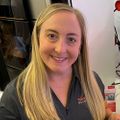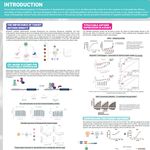Staff Scientist, Thermo Fisher Scientific
BIOGRAPHY
NOV 21, 2024 8:00 AM PST
A comprehensive study on adeno-associated virus analysis using a 3 μm monodisperse size exclusion chromatography column
Speakers
Event Date & Time
Date: November 21, 2024
Time: 8:00am PDT, 11am EDT
Abstract
Adeno-associated viruses (AAVs) are as small, replication-defective, non-enveloped viruses, serving as vectors for gene therapy. AAV vectors play a transformative role in delivering therapeutic genes with low immunogenicity, safety, and long-term transient expression. In AAV production, the separation of monomeric forms from aggregates is pivotal for optimal gene therapy outcomes. The success of AAV-based gene therapies relies on the purity and homogeneity of AAV vector populations, necessitating the monitoring of AAV aggregation for production and quality assurance.
Size-exclusion liquid chromatography (SEC) has been the preferred method for detecting and quantifying AAV aggregates. SEC is a non-interacting, passive separation chromatographic technique utilizing differential exclusion sample components based on size to effectively separate monomeric AAV particles from their associated aggregates. Advantages of SEC chromatographic methods include straightforward development, high sample throughput, and complementarity with techniques such as ELISA, cryogenic electron microscopy (cryo-EM), and AUC.
Our study details an effective approach for separating AAV monomeric capsids from high molecular weight species (HMWS) using a SEC column packed with 550 Å pore size, 3μm monodisperse silica particles in hydrophilic-coated stainless-steel hardware. The monodispersed silica particles feature a proprietary diol hydrophilic layer, ensuring an extremely low level of undesired interaction sites. Compared to traditional polydisperse particles, the monodisperse particles exhibit a consistent size distribution. This characteristic enables precise control during media synthesis and column packing, leading to substantial enhancements in column-to-column and lot-to-lot reproducibility. The SEC column housed in state-of-the-art hydrophilic-coated stainless-steel hardware aims to eliminate secondary interactions, ensuring optimal performance during the initial injection process.
Learning Objectives
- Understand the role of SEC in AAV characterization
- Explore the advantages of monodisperse silica particles in SEC
- Analyze the impact of pore size on SEC performance of AAV separation
- Understand important factors like flow rate that affect AAV separation using SEC
Webinars will be available for unlimited on-demand viewing after live event.
Labroots is approved as a provider of continuing education programs in the clinical laboratory sciences by the ASCLS P.A.C.E. ® Program. By attending this webinar, you can earn 1 Continuing Education credit once you have viewed the webinar in its entirety.
You May Also Like
Loading Comments...






